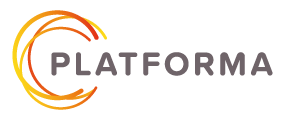Participatory Cartography to peacefully draw villages’ borders in Benin
Like in many parts of Africa, land rights in Benin are largely undocumented, resulting in land related conflicts accounting for 60% of court cases. In order to fast-track the modernisation of the country’s legal and institutional framework initiated by the introduction of the 2013 Land Code (Code foncier et domanial), citizens in two municipalities were asked to draw out the borders of their own villages. The result of this experiment: an inclusive and inexpensive tool for the demarcation of villages, municipalities or departments, called Participatory Cartography.
(This article was initially published on VNGi website)
Communities know best
The experiment took place within the framework of a Dutch funded ‘Projet foncier local’ (PFL) in the municipalities of Dogbo and Klouékanmè, three hours West of Cotonou. Supported by VNG International both municipalities are trying to survey and register land in accordance with the new land code. During the roll-out, the team was confronted by the lack of village demarcations. Though the village level plays a pivotal role in the land code, the majority of villages have never been demarcated in Benin’s history.
To overcome this obstacle the team turned to Participatory Cartography, a process which brings together citizens and local leaders to discuss the boundaries of their communities. Community members – including women and youth – were invited to public meetings chaired by land surveyors. Based on a map which indicated key landmarks (trees, rivers, roads, etc.) the community discussed where their village ended and the neighbouring village started.
After reaching an agreement, representatives were chosen to participate in the land surveyor’s field work. The results of this field work are presented back to the community for approval. Finally, in cases where the process led to village limits overlapping one another, local council members and village elders of affected villages were brought together to reach a consensus.
The process of Participatory Cartography does not rely on the capabilities of state of the art innovations or newly developed technologies, but it falls back on simple and available methods underpinned by the believe that communities are fully aware of their own demarcations.
Why Participatory Cartography pays off!
Between May and July 2016, 34 villages were demarcated in both municipalities. The public meetings doubled as information sessions for participants who had not been aware of the new land legislation. Disputes or conflicts during the process were sparse and all resolved peacefully. Costs averaged under US$500,00 village, but maybe most importantly, offered communities a demarcation based on the squirmy frontiers of human identities, rather than the straight lines of a ruler or opportunistic strokes of gerrymandering.
The experience of Dogbo and Klouékanmè has shown the added value of public participation in the demarcation process. Its importance doesn’t end at Benin’s new land code though. Given that village demarcations cumulate to municipal borders which in turn cumulate to departmental borders, indicate that a complete coverage of village demarcations could peacefully settle internal border disputes within countries which inhibit numerous government policies. In Benin, Participatory Cartography has proven to be an inclusive, inexpensive and feasible way to peacefully draw realistic borders.
Experimenting the application of the newly adopted Code Foncier et Domanial on a local level is an important component of the Projet d’appui à la gestion foncière locale (PFL). Participatory Cartography is a bottom-up methodology contributing to inclusive land registration and administration that has been developed within the framework of this project. It is VNGi intention to present this methodology during the Annual World Bank Conference on Land and Poverty in March 2017.
Brochure: Participatory Cartography in Benin
